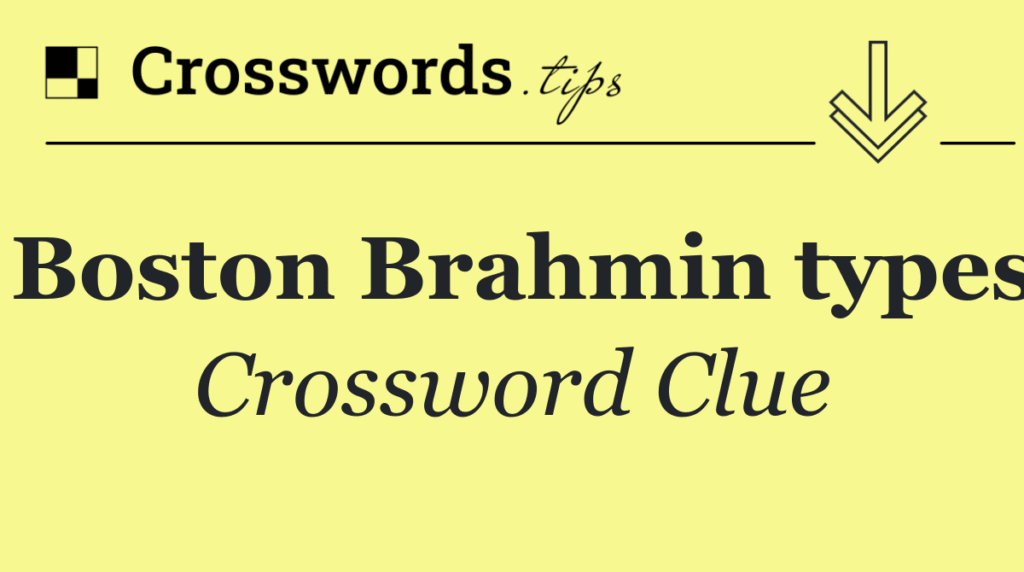Latest News Brings Boston Brahmins Back into Focus
Boston Brahmin types have recently gained renewed attention, appearing in yesterday’s New York Times Mini Crossword puzzle and sparking fresh interest in America’s most famous aristocratic class. The mosts correct answer we found is Wasps, referring to the White Anglo-Saxon Protestant heritage that defines traditional Boston Brahmin families.

What Are Boston Brahmin Types?
The Boston Brahmins are members of Boston’s historic upper class. From the late 19th century through the mid-20th century, they were often associated with a cultivated New England accent, Harvard University, Anglicanism, and traditional British-American customs and clothing. These elite families represented the pinnacle of American aristocracy, combining wealth with cultural refinement and social responsibility.
Oliver Wendell Holmes coined the term in a novel in 1861, calling Boston’s elite families “the Brahmin Caste of New England.” The comparison to Hindu Brahmins emphasized their position as the highest social caste in American society.

Historic Boston Brahmin Families and Characteristics
The traditional Boston Brahmin families included some of America’s most prominent names. The most well known wealthy families of nineteenth century Boston include the Appletons, Bacons, Cabots, Codmans, Coolidges, Forbes, Hunnewells, Lodges, Parkmans, Perkins, Russells, and Shaws.
The ideal Brahmin was not only wealthy, but displayed what was considered suitable personal virtues and character traits. The Brahmin were expected to maintain the customary English reserve in dress, manner, and deportment, and cultivate the arts, support charities such as hospitals and colleges, and assume the role of community leaders.
Modern Boston Brahmins: How to Join the Elite Circle
Today, there’s only one way to become a Boston Brahmin. You have to marry one. This exclusivity reflects how the traditional Brahmin class has evolved and adapted to modern times while maintaining its selective nature.
Many Boston Brahmin families made their fortunes as merchants and financiers before Holmes published his novel. If you hadn’t made your money by then, the only way into the caste was to marry into it. This historical pattern continues today, emphasizing bloodlines over new wealth.
Boston Brahmins and Contemporary Analysis
Recent scholarly work has examined the Boston Brahmins’ complex legacy. The Boston Brahmins, an elite group of wealthy, socially dominant families, played a major role in shaping the city’s post-war trajectory. Their priority wasn’t expanding opportunities for marginalized groups but protecting their own power and wealth.
This critical perspective reflects modern understanding of how elite families maintained social hierarchies while contributing to cultural and educational institutions.
Cultural Impact and Legacy
Their lives fitted a pleasant pattern of wealth and leisure directed by the strong New England work ethic and respect for learning. The writings of the Brahmin poets fused American and European traditions and sought to create a continuity of shared Atlantic experience.
The Boston Brahmins created lasting institutions including Harvard University, Massachusetts General Hospital, and numerous cultural organizations that continue to influence American society today.
Boston Brahmins in Popular Culture
The recent appearance of “Boston Brahmin types” in crossword puzzles demonstrates their enduring place in American cultural consciousness. These references typically focus on their WASP identity and aristocratic traditions, making them recognizable symbols of American upper-class heritage.
Understanding Boston Brahmin types provides insight into American social history, elite culture, and the evolution of aristocratic families in a democratic society.
